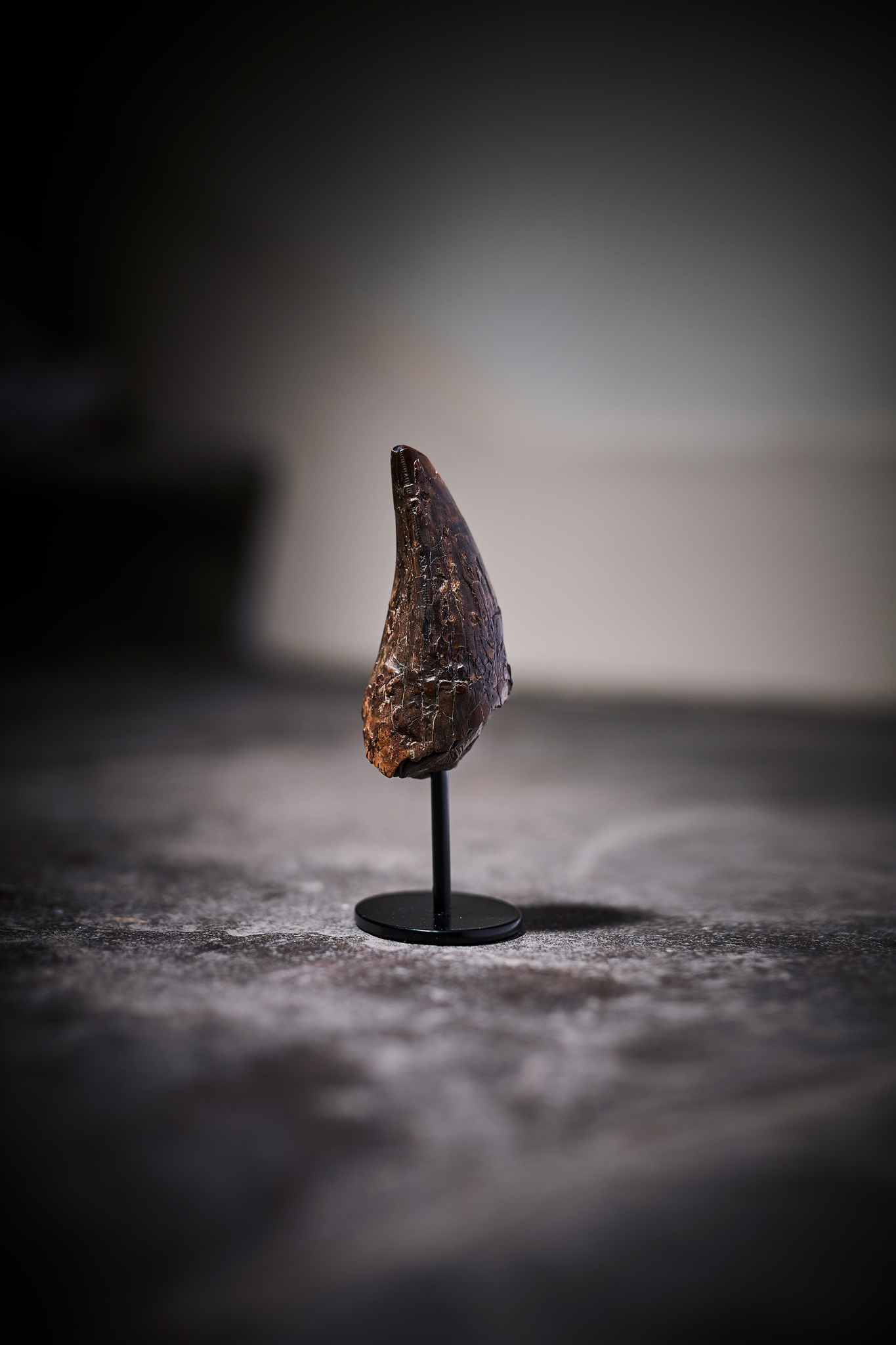THE TOOTH OF A TYRANNOSAURUS-REX
HELL CREEK FORMATION, SOUTH DAKOTA, LATE CRETACEOUS, C. 67–66 MILLION B.P.
Estimate: £7,000 - £9,000
Auction: 13 March 2025 from 13:00 GMT
Description
a well preserved tooth of a Tyrannosaurus rex, with fine serration, Hell Creek Formation, Maastrichtian, late Cretaceous, c. 67 - 66 million years b.p., raised on a bespoke mount
Dimensions
9cm tall
Footnote
This impressive Tyrannosaurus rex tooth was discovered in Perkins County, located in the north-western region of South Dakota. A sparsely populated area of semi-arid rolling hills, it offers a stark contrast to the prehistoric world in which this tooth once belonged.
The fossil originates from the renowned Hell Creek Formation, a geological treasure trove dating back 68–66 million years, right at the end of the Cretaceous period, just before the mass extinction of the dinosaurs. During this time, the landscape was a lush, subtropical floodplain teeming with life. Fossil discoveries from these beds include a diverse array of dinosaurs, reptiles, mammals, and even marine creatures, painting a vivid picture of a once-thriving prehistoric ecosystem. Tyrannosaurus rex had proportionally massive teeth, with thick, robust crowns covered in heavy enamel and serrations on both edges. Its 60 teeth, reaching up to 20 cm (8 inches) long, combined with an immensely powerful bite, around three times stronger than a lion’s, made it a dominant apex predator. Fossil evidence, including bite marks on Triceratops and Edmontosaurus bones, reveals its ability to crush through bone.
This particular tooth was found within an ancient river channel, among a jumble of animal remains that had been carried downstream by powerful currents and deposited in river bends. It was likely shed naturally as the T. rex replaced its teeth throughout its lifetime.

